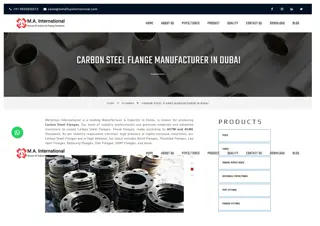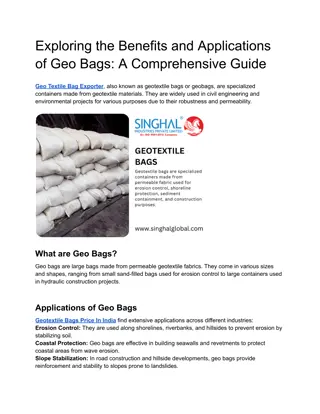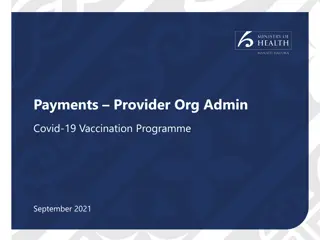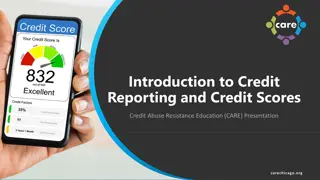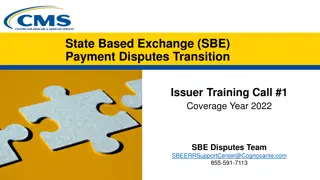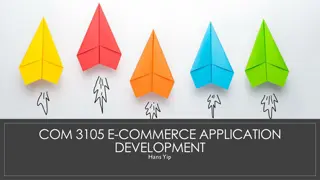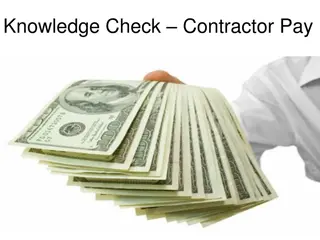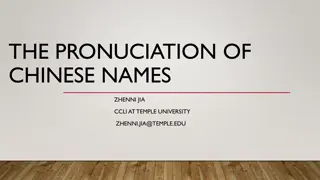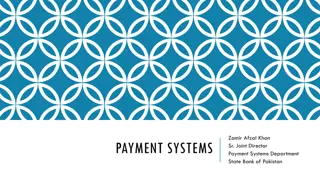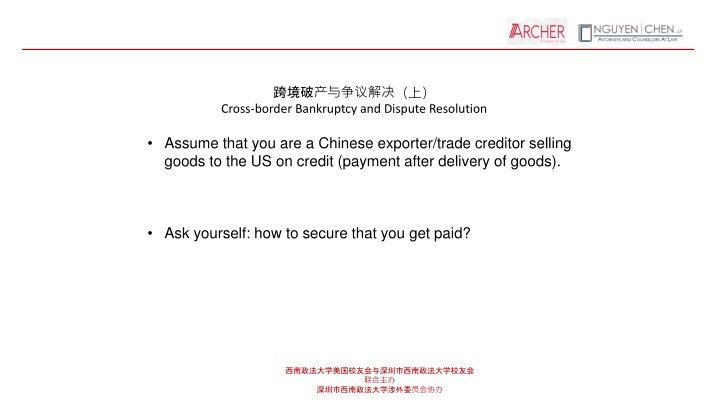
Securing Payment as a Chinese Exporter Selling to US on Credit
Chinese exporters selling goods to the US on credit face risks of non-payment. Understanding cross-border bankruptcy and dispute resolution mechanisms can help secure payment, such as utilizing Purchase Money Security Interest (PMSI) and navigating pre-bankruptcy and post-bankruptcy scenarios. Knowing the parties involved in a bankruptcy case and the importance of Pre-Bankruptcy PMSI and Regular Litigation versus Involuntary Bankruptcy Petition are critical for ensuring payment security.
Download Presentation

Please find below an Image/Link to download the presentation.
The content on the website is provided AS IS for your information and personal use only. It may not be sold, licensed, or shared on other websites without obtaining consent from the author. If you encounter any issues during the download, it is possible that the publisher has removed the file from their server.
You are allowed to download the files provided on this website for personal or commercial use, subject to the condition that they are used lawfully. All files are the property of their respective owners.
The content on the website is provided AS IS for your information and personal use only. It may not be sold, licensed, or shared on other websites without obtaining consent from the author.
E N D
Presentation Transcript
Cross-border Bankruptcy and Dispute Resolution Assume that you are a Chinese exporter/trade creditor selling goods to the US on credit (payment after delivery of goods). Ask yourself: how to secure that you get paid?
Content Pre-bankruptcy (before Debtor files voluntary Bankruptcy) Purchase Money Security Interest(PMSI)--5 Involuntary Bankruptcy Petition v. Regular Litigation--20 Post-bankruptcy For goods in Transit-- Stoppage of Delivery 5 For goods Debtor received within 45 days before Petition-Reclamation 5 For goods Debtor received within 20 days---Reclamation and you can withdraw it if not administratively insolvent 5 Filing Proof of Claim ( POC )--5 Formation of Official Committee of Unsecured Creditors-30 Q&A 15
Parties in a Bankruptcy Case U.S. Trustee - General monitoring of the bankruptcy process Chapter 7 Trustee - Collect, liquidate and distribute assets ( if any) Debtor-in- Possession ( DIP) - Chapter 11 debtor that remains in possession of the assets and operate the business during the bankruptcy Committees - Are appointed in Chapter 11 cases by the U.S. Trustee to represent the interest of the creditors as a class
Pre-Bankruptcy PMSI Purchase Money Security Interest Article 9 of UCC A good shield for exporters 1. Contract for Sale of Goods You need to have such a PMSI provision authorizing Seller to file the UCC-1 (Financing Statement) 2. To file the UCC-1 before the goods arrived at the warehouse of Buyer 3. May significantly lower insurance cost to China Export and Credit Insurance Corporation ( SinoSure )
Pre-Bankruptcy Regular Litigation v. Involuntary Bankruptcy Petition( IBP ) Cost analysis: Filing fee: similar flat fee $400.00 for regular litigation; $335.00 for Chapter 7 Involuntary Petitioning Creditors attorney s fee and cost can be reimbursed as allowed administrative expenses; The legal fee to claw back the assets fraudulently transferred will be paid by the Bankruptcy Estate. Statute of Limitations for Avoidance of Fraudulent Transfers The Defendant may delay the regular litigation until the SOL expires for avoidance of fraudulent transfers.
Involuntary Bankruptcy Commencement of Case Case is commenced with the filing of a Petition Voluntary vs. Involuntary by Debtor -Voluntary is commence by Debtor -Involuntary in commenced by the Creditors- - 1 creditor if Debtor has less than 12 creditors - 3 creditors if Debtor has 12 or more creditors The aggregate claims held by all petitioning creditors shall exceed $16,750. Let the Estate fund the Claw-Back litigations.
Post-bankruptcy: Stoppage of Delivery 2-705. Seller's Stoppage of Delivery in Transit or Otherwise. The seller may stop delivery of goods in the possession of a carrier or other bailee when he discovers the buyer to be insolvent and may stop delivery when the buyer repudiates or fails to make a payment due before delivery or if for any other reason the seller has a right to withhold or reclaim the goods.
Reclamation-for goods received by Debtor with 45 days Received When the Debtors has physical possession of the Goods. 45 days before the bankruptcy. Reclamation Demand must be served within 20 days after the bankruptcy.
For goods received in 20 days before bankruptcy For goods Debtor received within 20 days---Reclamation and you can withdraw it if not administratively insolvent
Filing Proof of Claim (POC) Pay special attention to the deadline for POC filing. Normally it s 3-4 months after the filing of bankruptcy.
Claims and Interests Proof of Claim or Interest -Must be filed by the Claims Bar Date Types of the claims - Secured Claim- claim secured by a lien in property - Administrative Claim- Costs and expenses of estate -Priority Claims- -pre- petition wages and salaries ( w/limits); contributions to employee benefit plans; alimony, support and maintenance; taxes - Unsecured Claim - Equity Interest
Official Committee of Unsecured Creditors in Chapter 11 Formation----Form, US Trustee List of 20/30 Largest Unsecured Creditors Professionals for Committee --Counsel, Financial Advisor --Who pays for the Professionals --Debtor-in-Possession (DIP) in the US v. Bankruptcy Administrator in China for Reorganization
Committee v. Directors & Officers (D&O) D&Os of many US companies have D&S liability insurance. D&Os may be liable for breach of fiduciary duties Standing Case Study
Avoidance Actions by Committee Preference - a transfer was made from Debtor s property - to or on behalf of a creditor - on account of an antecedent debt - while Debtor was insolvent - On or within 90 days before Debtor filed bankruptcy ( one year for an insider transfer) - That enables the recipient to receive more than if Debtor were liquidated and the proceeds distributed to each creditor Defenses -Ordinary Course of Business - Subsequent New Value - Contemporaneous Exchange of New Value
Avoidance Actions Fraudulent Transfer - Actual- Debtor transferred property with the intent to hinder or delay creditors -Constructive- Debtor received less than reasonably equivalent value in exchange for transfer and the transfer was made when the debtor was insolvent or rendered insolvent by the transfer
Committees Role in Reorganization Plan -Committee has the right to submit and solicit its own Plan. -Committee can help unsecured creditors negotiate a better Plan
Additional Topic if time allows--Deposition of Assets- 363 Sale-Opportunities for Buyers Dispositions in the ordinary Course Dispositions outside the ordinary Course Sales Free and Clear

